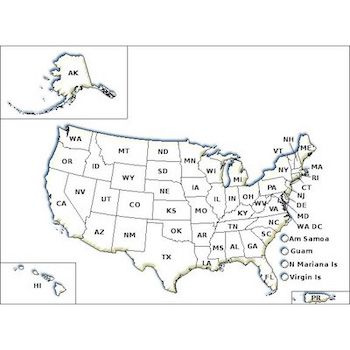Termites are wood eaters and they can cause significant damage to homes and other wooden structures. There are three different types of termites: drywood, subterranean, and damp wood. Because of their different habitats and behaviors, specific control measures are used for each type of termite.
Control tips:
- Make sure you have properly identified the termites. Many ants can be easily confused with termites because they look very similar and tend to swarm at the same time. Use the "Images" and "Learn More" tabs above for pictures and descriptions.
- Successful termite control often requires specific knowledge of termite behavior and treatment techniques. Do-it-yourself termite treatments may not be as effective as professional treatments. Some termiticides can only be used by trained and licensed professionals.
- Take your time and do your homework when selecting a termite control company. Termite treatments can be costly and time consuming. Getting estimates, inspections, treatment and warranty information from multiple companies can help you make an informed choice between companies, pesticides and methods.
- Prevent termites from infesting your home by removing wood stored under or next to your house. It can act as a bridge for termites to go from the soil to your house.
If you have questions about this, or any pesticide-related topic, please call NPIC at 800-858-7378 (8:00am - 12:00pm PST), or email us at npic@oregonstate.edu.
Last updated October 14, 2025
- Identify the termite species before choosing a treatment strategy. Control techniques are different for dry wood, damp wood, and subterranean termites.
- If you find nests, remove the damaged wood and eliminate excess moisture.
- Destroy and remove mud tubes you can find. They are termite highways from their nests in the soil to their food in your home.
- It is hard to find and remove termite nests. Consider hiring a professional.
- If you choose to use a pesticide, read the label before you buy. The USDA has a long-term study on termiticide effectiveness. You can compare active ingredients here. Try a lower toxicity
product first.
Prevention tips:
- Keep mulch several inches below wooden parts of the home.
- Remove woodpiles, dead trees, stumps, and roots near the home.
- Store firewood several feet away from buildings and off of the ground.
- Remove wood and paper stored under your home, in the basement or crawlspace.
- Reduce moisture near the foundation of buildings. Divert rainwater away from the home. Repair any leaking pipes, faucets, or air conditioners.
- Keep crawl spaces dry and well ventilated.
- Repair foundation cracks as quickly as possible.
- If you have a pesticide product in mind, have your label handy and click here for information about that product.
These images are graciously allowed to be used by NPIC by Bugwood.org. Images included in the Bugwood Network Image Archives (ForestryImages.org, IPMImages.org, Invasive.org, and InsectImages.org) are made available under a Creative Commons license. Individual photographers retain all rights to images included in the archive.
Through its county agents, the Cooperative Extension Service gives individuals access to the resources at land-grant universities across the nation. These universities are centers for research in many subjects, including entomology (the study of insects) and agriculture. Each county within the United States has an Extension office, which is staffed with agents who work closely with university-based Extension specialists to deliver answers to your questions about gardening, agriculture, and pest control.
Prevention and Control:
Information on specific types of termites:
Subterranean/Dampwood
Drywood



